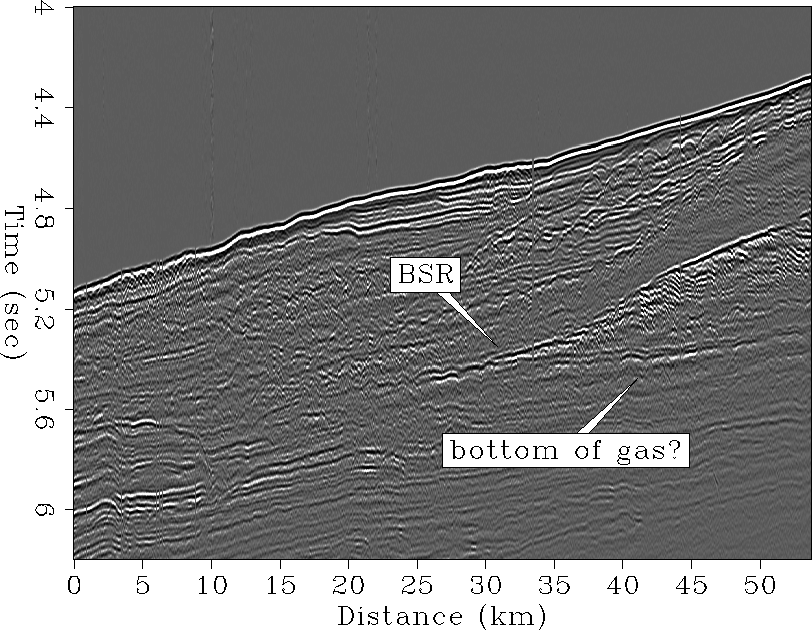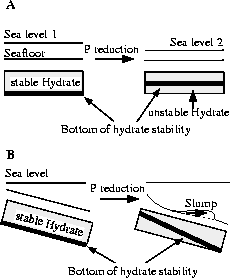




Next: FLUID-FLOW SIMULATION
Up: Ecker: Flow simulation
Previous: INTRODUCTION
Methane hydrate is a substance in which the molecules of gas and water
chemically interact to form an ice-like crystalline structure. This structure
is stable within a certain pressure-temperature regime. The phase diagram
in Figure 1 shows clearly that this pressure-temperature
regime requires either low pressure/low temperature or high pressure/high
temperature. Associated with the base of the hydrate stability field
are bottom simulating reflectors (BSRs) that parallel the seafloor at
a subbottom depth of several hundred meters. Seismic reflection profiles
often show a discontinuous or fading behavior of these BSRs (Figure
2), which might be explained by perturbations in the
pressure-temperature profile in the shallow marine sediments.
Changes in the pressure and temperature will ultimately affect the position and
characteristic of the BSR since it will result in different hydrate
stability conditions.
phase
Figure 1 Phase diagram showing the boundary between methane gas and methane hydrate. Redrawn after Kvenvolden (1993).

Several possible scenarios that can cause such
pressure/temperature perturbations can be imagined, such as
changes in sea level, land slides, faults
and diapirs, etc.. Figure 3 illustrates the cases of sea level
fall and mass sliding.
In both events, pressure reduction and temperature will affect the
hydrate stability field, placing the BSR into a zone of hydrate instability.
This will result in the breakdown of the hydrate and, consequently, in a change
of the BSR. While the BSR will be affected on a global scale
in case of sea level fall,
mass slides will have a more local effect on the BSRs.
In order to understand and successfully characterize seismic
sections showing discontinuous, fading BSRs, we must have
knowledge of the behavior of the
BSRs under hydrate breakdown. Moreover, several crucial questions related to
this breakdown must be
answered if we are to characterize the hydrate structures.
How will this breakdown affect the BSR? Will the BSR disappear and rebuild
in the new hydrate stability zone? If so, how long would it take to be
rebuilt? Is there still hydrate, even though there is no longer a BSR?
What will happen to the gas that will be released from the dissociating
hydrate? Will it migrate upwards undisturbed, or will it form hydrate again?
Fluid-flow simulation of a disturbed hydrate zone should be a good way
to get a first-order insight into these questions. It should enable me
to anticipate the changes in hydrate structure and BSR.
near-ann
Figure 2 Near-offset stack section of data from
the Blake Outer Ridge, offshore Florida and Georgia, showing a discontinuous
BSR.
 break
break
Figure 3 Illustration of hydrate breakdown. The upper part illustrates the change in the hydrate stability due to a drop in sea level thus affecting the BSR on a global scale. The lower part displays the stability behavior for mass slides which affects BSRs on a local scale.






Next: FLUID-FLOW SIMULATION
Up: Ecker: Flow simulation
Previous: INTRODUCTION
Stanford Exploration Project
11/12/1997



